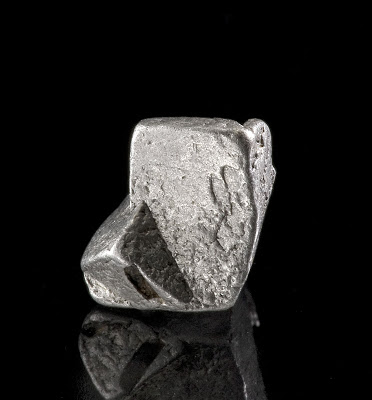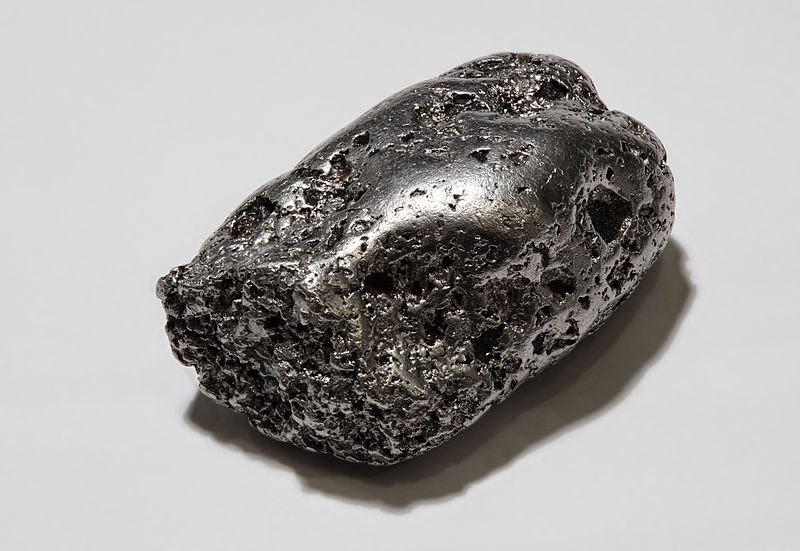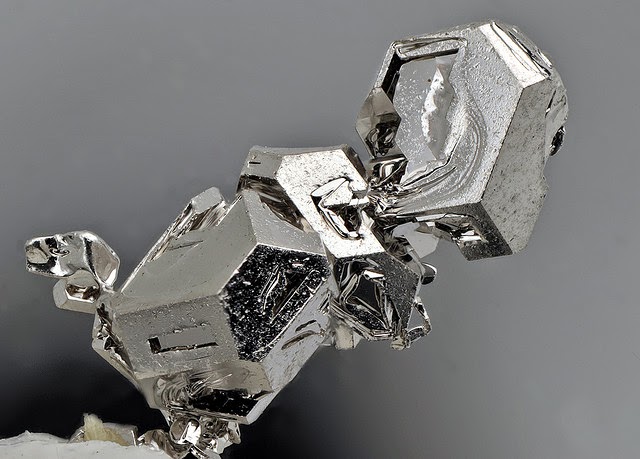
Locality: Most notably from the Urals, Russia and Brazil.
Name Origin: Spanish, platina = “silver.”
Platinum is a chemical element with the chemical symbol Pt and an atomic number of 78. It is a dense, malleable, ductile, highly unreactive, precious, gray-white transition metal. Its name is derived from the Spanish term platina, which is literally translated into “little silver”.Platinum is a member of the platinum group of elements and group 10 of the periodic table of elements. It has six naturally occurring isotopes. It is one of the rarest elements in the Earth’s crust with an average abundance of approximately 5 μg/kg. It occurs in some nickel and copper ores along with some native deposits, mostly in South Africa, which accounts for 80% of the world production. Because of its scarcity in the earth’s crust, only a few hundred tonnes are produced annually, and is therefore highly valuable and is a major precious metal commodity.Platinum is the least reactive metal. It has remarkable resistance to corrosion, even at high temperatures, and is therefore considered a noble metal. Consequently, platinum is often found chemically uncombined as native platinum. Because it occurs naturally in the alluvial sands of various rivers, it was first used by pre-Columbian South American natives to produce artifacts. It was referenced in European writings as early as 16th century, but it was not until Antonio de Ulloa published a report on a new metal of Colombian origin in 1748 that it became investigated by scientists.
Platinum is used in catalytic converters, laboratory equipment, electrical contacts and electrodes, platinum resistance thermometers, dentistry equipment, and jewellery. Being a heavy metal, it leads to health issues upon exposure to its salts, but due to its corrosion resistance, it is not as toxic as some metals. Compounds containing platinum, most notably cisplatin, are applied in chemotherapy against certain types of cancer.
Physical Properties of Platinum
Cleavage: None
Color: Whitish steel gray, Steel gray, Dark gray.
Density: 14 – 22, Average = 18
Diaphaneity: Opaque
Fracture: Hackly – Jagged, torn surfaces, (e.g. fractured metals).
Hardness: 4-4.5 – Between Fluorite and Apatite
Luminescence: Non-fluorescent.
Luster: Metallic
Magnetism: Naturally weak
Streak: grayish white
Photos:












